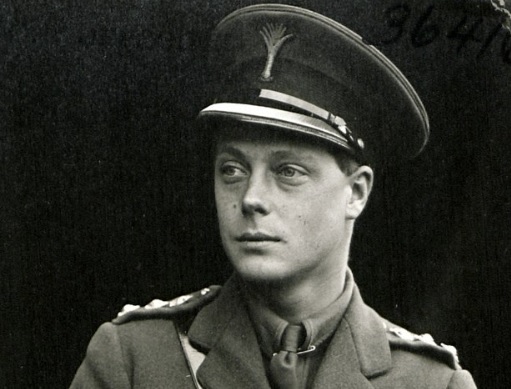
Monarchy is all about traditions and that includes naming conventions. Throughout the royal families of Europe there are common threads to be found for those who ascend to the throne.
Today, we’re looking at some of the most common regnal names.
Denmark
The monarchy with the strictest regnal names is Denmark. Since 1513, their sovereigns have either been named Frederik or Christian. As Queen Margrethe is the first queen regnant since this time period, and given that she succeeded her father Frederick IX and named her son Frederik, she has taken the place of a ‘Christian.’
Someday Crown Prince Frederik will rule as Frederik X and his son and heir will follow after him as Christian XI.
Norway
Historically, Norway and Sweden’s monarchy was united until the countries separated in 1905 and a plebiscite later that year saw the Norwegian throne offered to Prince Carl of Denmark.
Prince Carl chose a Norwegian regnal as his own, becoming Haakon VII. His son was two-years-old at the time his father took the throne. He’d been born with the name Alexander, but upon Haakon VII’s accession, his name was changed to Olav and he eventually reigned as Olav V.
The present king, King Harald, is the fifth king to use that regnal name.
Sweden
The Swedish monarchs have a unique naming convention: they place their regnal number in between their names. The current king, King Carl XVI Gustaf counts himself as the 16th king to use the name Carl (or Charles), though there haven’t been 16 kings named Carl in all of Sweden’s history.
The use of Carl/Charles as a regnal name dates back to 1161, when the first Carl reigned. He used Carl contemporaneously but the regnal number VII was added to his name posthumously based on a fictional history of Sweden used by Charles IX, who reigned from 1604-1611.
A historian by the name of Johannes Magnus wrote the Historia de omnibus Gothorum Sueonumque regibus in the 16th century, and he is believed to have invented the six previous Carls. Since then, when Swedish kings use the name, they add regnal numbers based on this convention.
Other popular Swedish regnal names include Gustaf—there have been six—and Oscar—there have been two.
The Netherlands
Under the current Kingdom of the Netherlands, which has reigned since 1815, there have been three Willems on the throne.
King Willem-Alexander once gave an interview in the late ‘90s indicating that when the time came, he’d reign as King Willem IV, but in the weeks leading up to his 2013 accession, he revealed he’d changed his mind and reigns under his birth name.
The queen regnants have all used different names for their nearly 100 years on the throne: Wilhelmina, Juliana, and Beatrix.
Belgium
Since Belgium created its own unique kingdom in 1831, the monarchs have used the common name Leopold three times and Albert twice. King Baudouin and King Philippe are the only ones with unique names, and someday Princess Elisabeth will succeed as Belgium’s first queen regnant and the first of her name.
Luxembourg
The Grand Duchy of Luxembourg has seen many rulers since its establishment in 1813. Prior to its evolution into a Grand Duchy following the Vienna Congress, rulers in Luxembourg were known as Counts of Luxembourg between 963 and 1354 and Dukes of Luxembourg between 1354 and 1794.
In the modern era, the name Guillaume has been a popular choice: there have been four so far, and Hereditary Grand Duke Guillaume will someday be the fourth.
This name is the only common name for Grand Dukes and Grand Duchesses: Adolphe, Marie-Adélaïde, Charlotte, Jean and the current Grand Duke Henri have all assumed unique regnal names.
Spain
The Spanish monarchs have generally used common regnal names since the union of Isabella and Ferdinand saw the unions of many separate kingdoms into a line of Spanish rulers.
The numbering of Spanish monarchs is based on the Castilian Crown—Ferdinand was numbered as the second (of Aragon) and the sixth (of Castille) and the next monarch to use that name became the seventh monarch using that name.
King Felipe is the sixth monarch to use that regnal name; there have been four kings named Carlos. Only two Spanish monarchs have used the regnal name Alfonso, but they are numbered as the seventh and eighth.
There haven’t been any Spanish queen regnants since Queen Juana in 1506, so should the Princess of Asturias take the throne, she will be the first Queen Leonor.
Monaco
The Grimaldi Family has ruled Monaco since 1297, and over that near-millennium, the Sovereign Princes have used a bunch of similar names. Honoré has been used five times; Charles three times; Jean and Louis twice.
The current Sovereign Prince, Albert, is the second to use the name. His father, Prince Rainier was the third to use that name. Prince Albert’s son and heir, Prince Jacques, will be the second to use that name.
United Kingdom
Since the Norman Conquest, many monarchs have chosen the same regnal name. There are eight Henrys—the most famous of them Henry VIII—and eight Edwards—the most famous also the eighth of his name.
There have been four Williams since William the Conqueror took the throne in 1066; should the Prince of Wales succeed his father he’ll be the fifth. Speaking of King Charles, he’s the third to use that regnal name.
There have also been three Richards, with Richard III going down as one of the most controversial British monarchs of all time.
George has been a popular regnal name since the Act of Settlement in 1701 saw the line of succession pass to Hanoverian relatives through Electress Sophia of Hanover and her descendants. To date, there have been six Georges; Prince George of Wales may someday reign as the seventh of the name.
In terms of queen regnants, four of them have shared regnal names: there have been two Marys and two Elizabeths.

